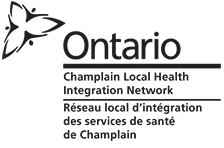
Epidemiology
- Most commonly occurs in adolescents and young adulthood
- Up to 4% of adults self-harm, with 1% who have chronic or severe self-harm (Kerr et al., 2010)
Signs and Symptoms
- Individual who causes deliberate harm to oneself, typically as a way of coping with psychological distress
- Patients report "it makes me feel better"
- Common modes of self-injury include self-cutting, scratching, hitting oneself, punching walls, preventing old injuries from healing, burning oneself (e.g. with cigarettes)
- Related self-harm behaviours can also include risky behaviours such as having unsafe sex, taking too many prescription or non-prescription medications
- Individual may describe themselves as being "clumsy" with frequent "accidents" in an attempt to account for their injuries
Presentation
-
Hx/Interviewing Questions
-
Normalizing statement
- Clinician: “It is a fact that when things become extremely stressful, sometimes people may feel like hurting themselves on purpose.”
-
Probe
-
Clinician: “Have you ever felt like hurting yourself on purpose?”
-
Clinician: “Have you ever felt like hurting yourself on purpose?”
-
Normalizing statement
-
Screening / diagnostic tools
-
There are no screening tools per se
-
There are no screening tools per se
-
Physical Exam (Px)
- Old injuries, e.g. scars
- New injuries that are unexplained, and in different stages of healing
- Types of injuries include cuts, scratches, bruises, or cigarette burns
- Locations include wrists, forearms, arms, legs (e,g,. thighs), chest
- Wearing clothing even in summer or hot months, in order to cover up injuries (e.g. patient that wears long sleeves and long pants in summer rather than wearing T-shirt and shorts like others)
Management in Primary Care
- Treat the injuries as you would non-self-inflicted injuries, i.e. non-judgmentally
- Do not try to make the person feel bad or guilty in any way; after all, if you make the patient feel worse, the patient will be less likely to want to confide in you
- Acknowledge the deep distress that the person must have had in order to have to engage in self-harm
- Express optimism that there are treatments/strategies can help, and offer to refer if the patient is agreeable.
-
Use motivational enhancement techniques.
-
If the person is ready to change
- Provide referral to treatment, and/or counseling/therapy
-
If the person is not ready for change, then
- Do not attempt to coerce the patient into stopping.
- Focus on staying connected, e.g. validating how distressed they may be feeling
- Ask about positives (i.e. the functions) of using self-harm: "What does the cutting do for you?"
- Ask about the negatives from cutting (e.g. shame, embarassment, etc.): "Does the cutting cause any problems?"
- Ask about openness to alternate coping strategies: "What if we could help you find a way to deal with the pain, but without causing the problems that the cutting causes?"
-
If the person is ready to change
- Offer follow-up appointment, which is an important way to show that you care about the patient
-
Non-suicidal self-injury: First aid guidelines
Published 2008 Direct Download MHFA_self-harm_guidelines_A4_2012.pdf Produced By Orygen Youth Health Research Centre Ages Served All ages Website http://www.mhfa.com.au/guidelines.shtml
-
Self-harm: Longer-term care and treatment of self-harm
Published 2011 Produced By National Institute for Health and Clinical Excellence (NICE) Ages Served All ages Website http://guidance.nice.org.uk/cg133
-
Self-harm: the short-term physical and psychological management and secondary prevention
Published 2004 Produced By National Institute for Health and Clinical Excellence (NICE) Ages Served All ages Website http://guidance.nice.org.uk/cg16
References
- Guide for Primary Care Clinicians: Caring for Youth Who Self-Injure, American Academy of Paediatrics
- Kerr, P. L., Muehlenkamp, J. J. and Turner, J. M. (2010), Nonsuicidal Self-Injury: A Review of Current Research for Family Medicine and Primary Care Physicians, 23, pp. 240–259
About this Document
Written by Dr. Michael Cheng, Staff Psychiatrist, Children's Hospital of Eastern Ontario (CHEO) and members of the eMentalHealth.ca/PrimaryCare team which includes members of the Department of Psychiatry and Family Medicine at the University of Ottawa. Reviewed by members of the Family Medicine Program at the University of Ottawa, including Dr's Farad Motamedi; Mireille St-Jean; Eric Wooltorton.
Disclaimer
Information in this pamphlet is offered ‘as is' and is meant only to provide general information that supplements, but does not replace the information from a health professional. Always contact a qualified health professional for further information in your specific situation or circumstance.
Creative Commons License
You are free to copy and distribute this material in its entirety as long as 1) this material is not used in any way that suggests we endorse you or your use of the material, 2) this material is not used for commercial purposes (non-commercial), 3) this material is not altered in any way (no derivative works). View full license at http://creativecommons.org/licenses/by-nc-nd/2.5/ca/











